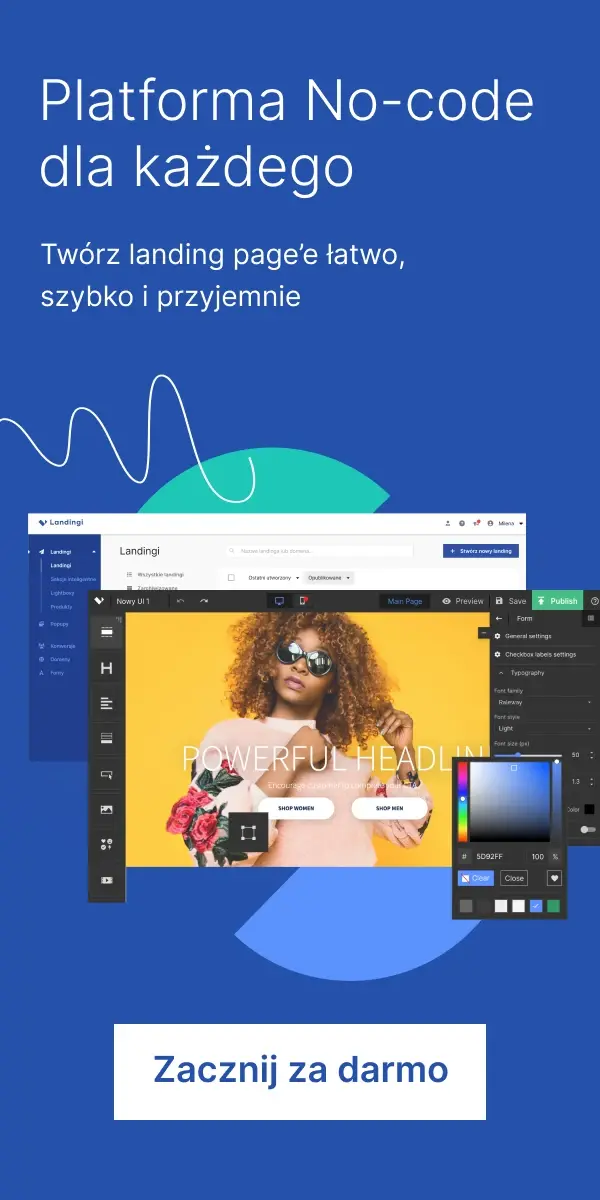Get to know what is a case study and how to create it! Find out what is necessary when you discuss a specific topic and learn how to provide insightful details to your audience.
Knowledge served in the form of general formulas, industry concepts and specialist language is not always easy to understand. An alternative to vague facts is a case study concerning a particular undertaking. It should be prepared by specialists in a simple language, in a specific field. That’s how to make your case study a gold mine for anyone looking for valuable information.
In this article, we will explain to you what is a case study, how to create it and why it carries weight in modern marketing.

If you feel like learning, you’d better learn from the best. That’s why case studies made by recognized authorities are most likely to nourish your knowledge about a specific topic.
A case study is a supportive analysis, exposing a particular topic, a detailed description of actions taken, and the results obtained. The goal of a case study is to present a problem and its solution in a comprehensive manner.
Note that case studies have great marketing importance. Why? Let’s assume that your company has recently finished an outstanding project, and you want to pride yourself on it. By preparing a case study, you can present your potential clients that they are dealing with a professional who knows the ropes. In other words: you prove the effectiveness of your actions.
A valuable case study boosts the learning process. It’s a real-life example, a strategy that has already been applied – not to mention that thanks to case studies, you can study the others’ mistakes and learn from them.
Case studies – examples
Let’s use some examples to better understand the case study concept.
Imagine you are a leading marketing agency, and you’re working on a case study that is supposed to show how to run an outdoor campaign for a furniture company.
This means that your case study is supposed to show:
– what problems the furniture company had had before the cooperation started,
– what kind of actions you’ve executed,
– how much money these actions have absorbed
– how many successful transactions went through thanks to your solutions.
Let’s take an example closer to our industry, which is marketing. The first step is to show the conversion rate, and then we can use the results to point out the elements of the design that made the page convert.
It also might show how specific changes influenced conversion. For example, better copy or using the language of benefits.
How to write a case study?
We like examples because they help us understand how things work in practice. If you are wondering how to create a case study, the first thing you’d better do is to think over if you really have something to boast about. A case study is supposed to demonstrate your professionalism and to show that you can achieve what your clients want you to achieve.
No matter the industry, keep in mind these basic rules:
Rule no. 1: focus on one case at a time. A case study should be a description of a single situation. Thanks to that, you are not distracting the recipient.
Rule no. 2: provide all the important information, but do not bore the user witless. Condense the content of the case to the most important issues. Rule no. 3: keep it simple and clear. Your case study should be easily readable. State the specific problems and the needs of the client, show which solutions were applied, and present the effects.
Rule no. 3: if you can boast with numbers, do so. Specific numbers (for example, the number of gained clients) are going to make a good impression and speak to the imagination of your audience.
Rule no. 4: use graphic elements. Readable tables and charts will help users to understand and remember the data presented. That refers to the case study in form of a text, live speech, and video format.
Rule no. 5: do not lie. First of all, it’s unfair. Secondly, remember that it’s very easy to fact-check the most of the information you give. Case study as a lead magnet
An interesting case study might be used as a lead magnet and offered on a landing page. If you want to persuade the user to leave their e-mail address, to fill out the form, or to sign up for a newsletter, you definitely should offer them something in return. Why? An average internet user knows well that their email address or phone number is valuable data, so they won’t be that eager to share these details with you for free. But asking someone for contact details and giving them a case study in exchange – that’s a whole different conversation.
If you decide upon using case studies as a lead magnets, make sure they are refined in every detail. If your case study is not useful enough, the person who downloads it will most likely feel scammed. That will influence your brand image – needless to add, not in a way you’d prefer.
If you want to create a case study which actually gets the audience to convert, start by identifying the needs of your potential customers. Think about the topics that might interest your audience, and encourage them to visit your landing page.
If you are planning to create landing pages, you might need ready-to-edit templates. By using the platform Landingi you can choose templates of landing pages, which suit your target and the industry in which you work. Templates are easy to adjust to your own needs.


